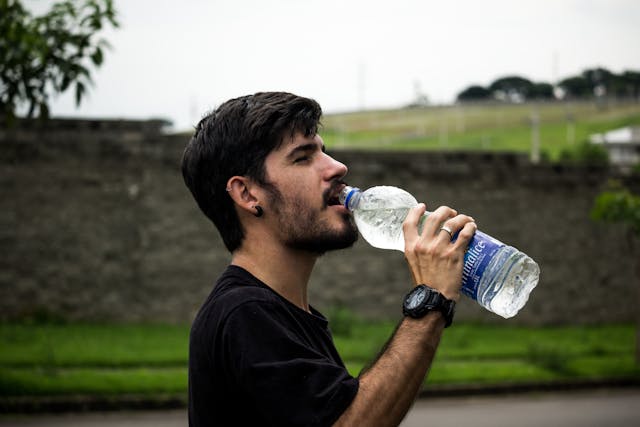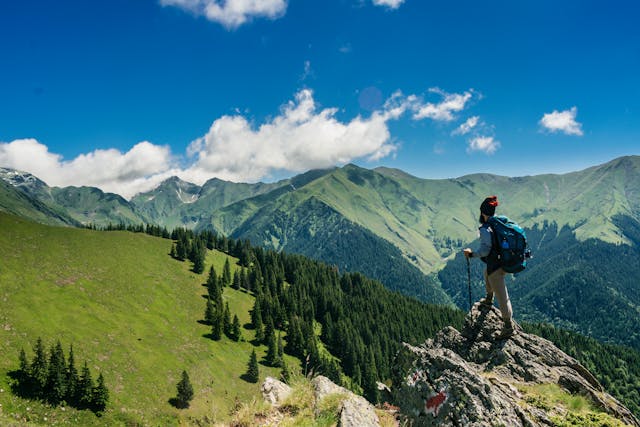
- Quality sleep is essential for muscle recovery during hiking.
- Plan your hikes with post-recovery periods to avoid overexertion.
- Consider the amount of rest and recovery time needed when scheduling hikes.
- Recovery is crucial for minimizing discomfort and reducing the risk of injury.
- By prioritizing self-care, you can ensure that hiking remains sustainable and enjoyable.
Hiking, particularly over longer and more challenging trails, is an exhilarating experience that offers many physical, mental, and emotional benefits. The act of trekking through nature not only rewards enthusiasts with breathtaking landscapes but also provides a full-body workout that strengthens the heart, muscles, and mind.
However, as fulfilling as it may be, the wearing down of the body’s muscles, joint shifting, and energy expenditure can leave even the most seasoned hikers feeling entirely drained. This post isn’t just for those who’ve braved the ascents and descents. It’s a guide for every adventurer who has felt the aches after a particularly strenuous expedition and needs to recover effectively to sustain their hiking passion.
The Importance of Post-Hike Recovery
Skimping on post-hike recovery could lead to unnecessary aches, fatigue, and potential injuries that might affect your hiking goals. The recovery process is when your body heals and strengthens, which is essential for your well-being and future hiking plans. Effective recovery strategies help reduce muscle soreness, inflammation, and the risk of overuse injuries while preparing the body for the next demanding hike.
Effective Recovery Techniques for Hikers
Recovery strategies range from passive rest to active recovery. Integrating various techniques can speed up the body’s healing process, ensuring you’re back on the trails in optimal condition. Here are some actionable methods you can employ following a major hike to aid your post-adventure recovery.
1. Opt for a Massage
A good massage can work wonders for your tired muscles. It helps reduce muscle tension, improves blood flow, and soothes any areas of post-hike pain. Deep-tissue or sports massages are particularly beneficial as they focus on overworked areas during hiking. If professional services are not an immediate option, self-massage or the use of massage tools can also offer some relief.
2. Stretch and Do Light Yoga
Engage in gentle stretching and a session of light yoga. These practices help elongate the muscles and improve flexibility, alleviating soreness and stiffness. Poses such as the forward bend, downward dog, and the child’s pose are particularly effective for hikers.

3. Hydrate and Replenish Electrolytes
Proper hydration is crucial post-hike; it is essential to replace the fluids lost through sweat. Electrolytes, which maintain fluid balance and muscle function, are also critical. Opt for natural sources of electrolytes, such as coconut water, or consider supplements. Make sure to also consume a balanced meal with protein, carbohydrates, and healthy fats to replenish energy stores.
4. Take a Warm Bath
A warm bath post-hike could be your ticket to relaxation and recovery. Warm water helps relieve muscle tension and may also reduce swelling that occurs in response to intense physical activity. Adding Epsom salts to your bath supplies your muscles with a dose of magnesium, which aids in recovery and relaxation.
5. Ensure Quality Sleep
Quality sleep is one of the most effective recovery tools. While sleeping, the body undergoes repair processes that are critical for muscle recovery. Ensure you get adequate rest by creating a conducive sleep environment and maintaining a sleep schedule. If possible, take a short nap after your hike to boost recovery. Doing so will leave you feeling refreshed and energized.

Planning Your Next Hike with Recovery in Mind
One of the best ways to incorporate recovery into your hiking lifestyle is by planning your hikes with post-recovery periods. Schedule lighter hikes on the days following a strenuous trail. This method allows your body to recuperate without remaining sedentary, which can lead to stiffening of the muscles. When planning your hiking intervals, consider how much rest and recovery time your body needs to avoid overexertion.
Final Thoughts
Hiking is not just about reaching the summit; it’s about the entire process and the experiences it offers along the way. Recovery is an integral part of hiking that ensures your ability to enjoy these experiences for years to come. By integrating these recovery techniques into your post-hike routine, you can minimize discomfort, reduce the risk of injury, and maintain a high level of performance on the trails.
Remember that the ultimate goal of hiking is not to conquer nature but to enjoy it responsibly and sustainably. By nurturing your body through mindfulness and self-care, you can ensure that the joy of hiking remains an enduring part of your life.

